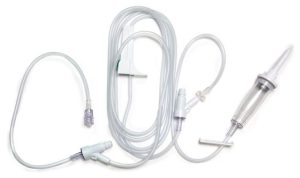In the realm of healthcare, swift and effective response can make all the difference between life and death. Whether it’s on the front lines of emergency situations or in the midst of critical care environments, the role of medical equipment bags cannot be overstated.
These portable repositories of essential tools and supplies serve as the lifeline for healthcare providers, enabling them to deliver timely and comprehensive care across a spectrum of scenarios.
This article delves into the multifaceted significance of medical equipment bags, exploring their pivotal role from the initial moments of first response through to the complexities of critical care provision.
Emergency Response: A Race Against Time
During emergencies, every second counts. Medical equipment bags serve as the frontline arsenal for first responders, equipping them with the necessary tools to assess, stabilize, and treat patients on-site.
From trauma kits containing bandages and splints to advanced airway management devices and defibrillators, these bags are meticulously packed to address a diverse range of medical emergencies. Their compact yet comprehensive design allows first responders to quickly access vital supplies, enabling rapid interventions that can mean the difference between survival and tragedy.
Mobility and Adaptability: Essential Traits in Dynamic Environments
In the fast-paced world of emergency medicine, flexibility is key. Medical equipment bags are engineered to be lightweight and portable, ensuring that healthcare providers can move swiftly and seamlessly in dynamic environments.
Whether navigating through crowded streets, scaling rugged terrain, or accessing remote locations, these bags are designed to withstand the rigors of any situation. Moreover, their modular configurations allow for customization based on specific needs and protocols, enabling healthcare teams to adapt to evolving circumstances with ease.
Critical Care Support: Extending the Continuum of Care
Beyond the realm of emergency response, medical equipment bags play a vital role in critical care settings. In intensive care units, operating rooms, and other clinical environments, these bags serve as supplementary resources, providing healthcare providers with immediate access to essential supplies during critical procedures and patient interventions.
From sterile instruments and dressings to specialized monitoring devices and medication administration tools, these bags ensure that critical care teams are equipped to deliver optimal patient care without delay.
Integration with Technology: Enhancing Efficiency and Connectivity
In an era of advancing technology, medical equipment bags are evolving to integrate seamlessly with digital systems and communication networks. Smart bags equipped with RFID tagging, barcode scanning, and wireless connectivity enable real-time inventory management, asset tracking, and data transmission.
This integration enhances efficiency, accuracy, and communication among healthcare teams, facilitating smoother workflows and improved patient outcomes.
Conclusion
From the chaos of emergency response to the precision of critical care, medical equipment bags serve as indispensable companions for healthcare providers at every stage of patient care. Their versatility, mobility, and integration with technology empower frontline responders and critical care teams to deliver timely and effective interventions, ultimately saving lives and improving patient outcomes.
As healthcare continues to evolve, the integral role of medical equipment bags will remain steadfast, ensuring that providers are equipped to meet the challenges of today and tomorrow with confidence and competence.





